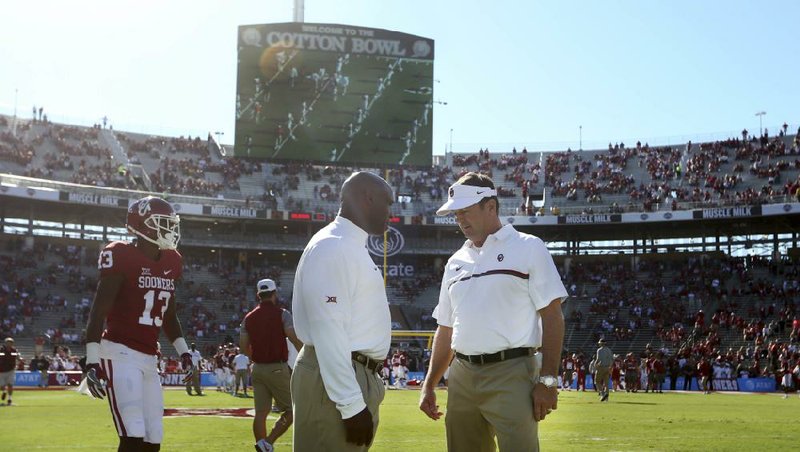Now that the Big 12 has decided to stay at 10 schools, it's time for the conference to figure out whether to split into football divisions and determine who will play in the Big 12 Championship Game that returns next season.
"We weren't able to move forward in a direction until we knew about the composition of the conference going forward," Oklahoma Athletic Director Joe Castiglione said. "We are looking at several options."
If the league opts to return to divisions, the big question becomes how to split into groups of five.
As a 12-team league until 2010, the Big 12 had North and South divisions. That is possible again, or maybe a roughly East-West split? There are four Texas schools, two each in Kansas and Oklahoma and one each in Iowa and West Virginia.
"It's a hard league to play in because you play everybody," TCU Coach Gary Patterson said. "Good teams are good teams. ... It'll be interesting to see how they set it up and how they do it."
The league is keeping the round-robin schedule proudly touted since dropping to 10 teams so, divisions or not, every team still will play each other every year.
That's different from the larger conferences; Nebraska left the Big 12 for a 14-team Big Ten after the 2010 season and last weekend played Indiana in a conference game for the first time.
Traditional rivalry games such as Texas-Oklahoma at the State Fair of Texas, Kansas-Kansas State and Baylor-TCU will continue on an annual basis. There is just now the possibility of a championship game rematch.
Castiglione said league athletic directors will even consider the possibility of divisions that would change "every so many years" based on some sort of metric, perhaps standings from previous seasons.
Or without divisions, the league could match its top two overall finishers for the title game.
"There's certainly risk and reward with that choice, but it's an option," Castiglione said.
Teams from the other division could be scheduled to play in the first portion of conference play, providing a potential gap of a month or so between what will always be a rematch in the title game.
If taking the top two teams overall, there could be back-to-back games against the same teams. Last year, Oklahoma and Oklahoma State were the top two teams after the Sooners won their annual Bedlam matchup by 35 points to end their regular seasons.
That also would have been a possibility this year, when ninth-ranked Baylor, 12th-ranked West Virginia and No. 16 Oklahoma are all still without a conference loss. The Bears and Mountaineers play on the final Saturday of the regular season.
Sports on 10/20/2016

